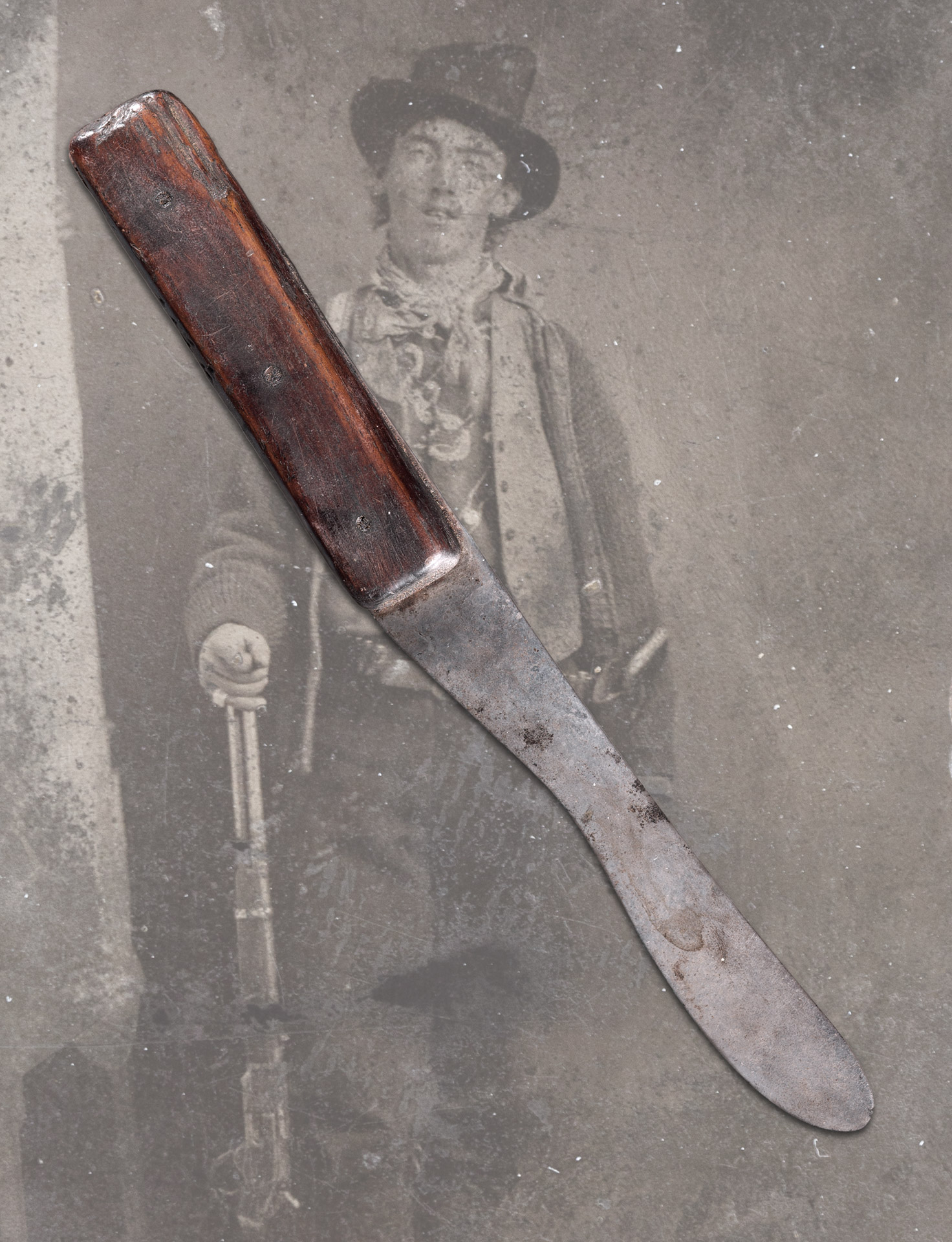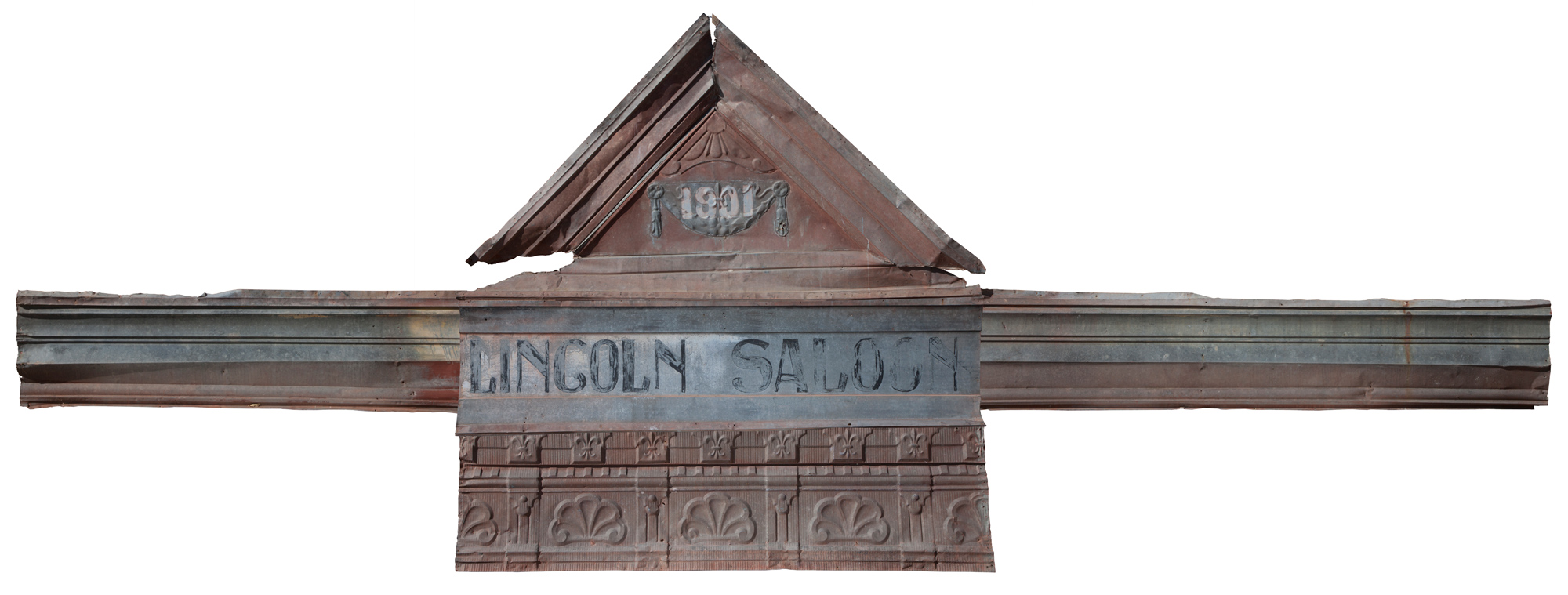Written in pencil, on a small cigarette paper, signed Wm. Bonney. Said to have been discovered in a shell case in the Florida Mountains of Southwest New Mexico. Single-sided. 2 7/8" x 1 1/2". (Shown actual size.)
It reads: “This is our last shell and about 10 Indians left so our chances look slim But we are going to take a chance yours truly / Wm Bonney”.
Ex: Maurice G. Fulton Collection
From the Robert G. McCubbin Collection
Includes a letter dated August 2, 1952, from Maurice G. Fulton to Robert A. Mullins that mentions the cigarette paper. Both Fulton and Mullins were well-respected, 20th century historians, authors and collectors of the American Southwest, and particularly the Lincoln County War.
Robert McCubbin: “This is one of those ‘too good to be true’ things that makes one very skeptical. However, the signature and handwriting stands up well when compared to the Tascosa receipt from WH Bonney to Henry Hoyt, especially considering the thin cigarette paper it is on and the conditions under which it was written (under an Indian attack!) Fulton, from whom this came to me after his death, wrote in a letter, “if the note was planted by a modern boy, he would have unquestionably signed it ‘Billy the Kid’…” It is also not likely anyone faking and hiding it would have gone to the trouble to try to duplicate an authentic signature. The fact that Fulton, a reliable historian, seemed to think it the real thing has significance. Anyway, I find it to be an interesting item.”
Note: This lot has no estimate.
We cannot certify that this item is authentically a note from William H. Bonney, and therefore do not know what the estimate should be. It seems that Maurice Fulton felt it was authentic. Bob McCubbin finds it persuasive. We find it to be an interesting historic artifact regardless, but are simply unwilling to commit without more provenance. Therefore, you’ll just have to decide for yourself.
Lot 712, Brian Lebel's Old West Auction - January 25-26, 2019. Mesa, AZ.
Sold $3,025.





